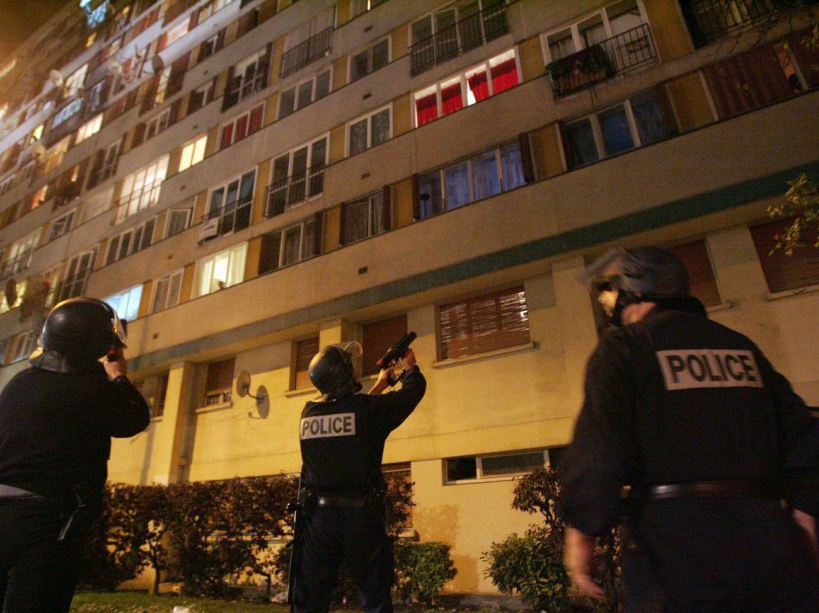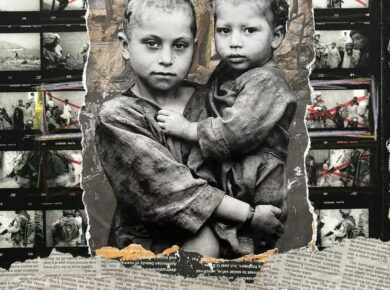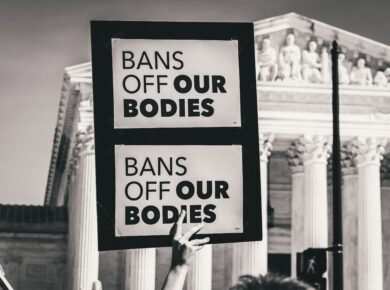Disclaimer: This post reflects solely the opinion of the authors and should not be taken to represent the general views of IPPR’s management/ editorial team or those of fellow authors
France counts around 7.3 million descendants of immigrants. In 2012, they represented 11% of the French population. Fifteen percent of them are from Algerian descendants, and 11% of them are from Moroccan descendants. One characteristic of this population is their overwhelming concentration within urban areas (89% of them) in France. Among them, thirty percent live in the Parisian outskirts. The rest of the French population, on the other hand, accounts for 20% percent of Parisian outskirts. This may suggest strong regional inequalities as the outskirts tend to be poorer in Paris. In fact, 9 of 20 poorest districts in France are in Paris.
Finally, social reproduction makes it more likely to find the same statistics over several generations. The same population has shared the same living conditions for the first and second generations.
So why study this population, where it came from and its characteristics? Because France is deeply scarred by its colonial past and having a fruitful debate on social issues involves understanding the characteristics of exclusion.
In particular, the Algerian war (1954-1962) led to the downfall of the fourth Republic in France where Charles de Gaulle became the first president of the Fifth Republic in 1958. His first discourse displaying his project to make Algeria independent, led to resistance within the French government.
As negotiations moved forward for independence (1961), Settler opposition began to deploy acts of terrorism. An agreement was made with Algeria, but the tension remained between pro-independence and pro-colonialization.
Pressure mounted in Paris, where the police force held strong power over decisions.
Maurice Papon back from Algeria in 1958, was now ordering supplement racial profiling. He also ordered to intensify violence against potential “terrorist attacks”.
On October 5, 1961, Paris was put under a large curfew for the French Muslims of Algeria to stop criminals and so-called “terrorist acts.”
The National Liberation Front was a powerful actor demanding independence through guerilla warfare and diplomatic activity abroad. During the year of August 1961, killings of policemen increased, and so did criminal offenses by the police towards Algerians.
On October 17, the National Liberation Front organized a peaceful protest against Papon’s initiatives. This provoked a hateful reaction from the police, where approximately 200 Algerians died. Some were tortured, and others were thrown into the river and drowned.
Contention lies when the death toll diverges from the official discourse of the police officers.
The head of the project targeting “Muslim Algerians” was also responsible for deporting Jewish children during the second world war in the city of Bordeaux. Despite Papon’s crimes, he was still placed at a strategic political position in Paris. Today, the remembrance of these crimes is still understated amongst politicians. This includes the lack of disclosure of archives and other relevant sources to grasp important data on the crimes committed.
As persisting inequalities remain, discrimination is still evident. In particular, the persisting discrimination against the north-African descendants’ youth.
In education, the disadvantaged youth claim the choices are forced upon them. When they finish middle school, they are forced to work in fields they do not enj.oy After all, it is hard refuting their complaints even if we try because it is a living example of how social reproduction functions. Not only is their social capital weak, but the families do not have the capacity to help them. Let alone motivate them to succeed.
A study on hostile school environments described the precarious position of adolescents from Mexican origins living in the United States. This study captured that “like any other ethnic minority youths, they stand not only at the crossroads of childhood but also at that of two cultures.”
The study also showed that adolescents with hostile school environments predicted an increased risk of social deviance.
This is further emphasized by recent Riots , one of them being in October-November 2005. The objective was to “set on fire” France as much as possible in order to express grief.
The motives amplified even more when two adolescents died after running away from policemen chasing them. The two policemen were found to be guilty, five years later and were condemned for not helping them after they hid in an electrical transformer. The two policemen never ended up imprisoned.
This feeling of injustice within society amounts to a degrading feeling of rejection from the French system. This youth is relegated, and the sense of inadequacy is replaced by the development of a parallel culture. Because the areas they live in are enclaved, the state’s power is limited, and its authority is often dismissed. This, tied with an informal economy of drugs where “small” crimes are widely tolerated.
Not only is this culture tied to a sense of inadequacy within the system, but it is also attached with a sense of humiliation by the police. Racial profiling, inside or outside of their living areas, is a longstanding issue. The European Agency for human rights conducted a survey on police control in the EU. In France, 42% of total arrests in a year were north-African looking. 22% of total arrests were white. Unjustified police control is tied with racial profiling and is feeding into systemic hatred towards the police. This, with the control of illicit traffic, is considered illegitimate and unfair.
The reasoning is deeply flawed, but it considers long standing discriminations within the work field which induced them to adopt socially deviant actions such as selling drugs.
How does exclusion function? The segregation mechanisms can be voluntary or intentional, relegating individuals or social groups. Exclusion can include qualitative anticipations, discriminatory attitudes. Finally, it can include “passive” actions and an avoidance of the “other”.
Today, French politics pictures society as being divided. And uniting France again, with its symbols, is often the rhetoric of right-wing politics. Claiming that there must be action towards a better order in society, often targeting “the other” as the scapegoat. The understanding of “social cohesion” is normative, grounded in a glorious, often delusional image, of what France represents and what it “should” be. The problem lies in the fact that social cohesion is tied to the interpretation of what represents a “society”. And interpretations of what it is and what it isn’t is highly contested.
Whilst there is a fundamentalist understanding of social division characterized by social deviance, how do we understand the issues of this social crisis in France?
Under this lack of cohesion, theory describing “Anomia” allows us to further understand what is going on.
Durkheim (1984) claimed that “social order is maintained through social integration and regulations in a social equilibrium”. As a result, Durkheim describes a sense of Anomia in individuals in his infamous book “The Suicide”. Originally, Anomia comes from the Greek Anomia describing the lack of rules and norms.
It describes a transitional period from a rural society to an urban society where new institutions are created, and traditional beliefs are (almost) wiped out. Durkheim attempted to describe Western society, where industrialization destroyed “old” institutions such as marriage and family. But the theory can be applied to different contexts. For example, democratic transition, from an authoritarian system to a democracy and the process under which new norms are formed.
The concept of Anomia can be understood in two ways. Firstly, the interpretation of Durkheim. The latter interprets society as one “unit”. Social cohesion lies in the unilateral understanding of society. Anomia represents the breakdown of solid institutions which tie individuals altogether. Secondly, anomia can be understood through a Mertonian view of society. Society is understood as unilateral individualism. The analysis highlights the socioeconomic differences between individuals, explaining the degree of social integration.
When we use a Mertonian analysis, we understand the French issue by the lack of personal integration. The lack of motivation in order to attain society’s visions and objectives.
The interpretation from Durkheim, on the other hand, highlights the consequences of structural changes within society. This includes considering the stability of important symbols of society.
Analyzing the political context, the descendants of immigrants in the 80s lived under the lack of economic resources and a rise in social inequalities. Furthermore, historical events, marking the Middle Eastern world such as the first Gulf War, induced these individuals to own even more the symbols of their origins and Islam.
Unlike the mertonian analysis, Durkheim’s analysis on structural issues clearly describes a flawed integration to society by these groups due to structural changes.
The state has failed to interest these individuals to integrate them into the unit.
One solution is to limit a dysregulated market, which promotes the need for a parallel market. The need to increase interests in using illegal means of production will lead to a better inclusion within society in labor, politics and education.
This article talked about the characteristics of social deviance and social anomia in France.
Anomia explains the lack of rules and regulations within a society where institutions are weakly recognized in certain categories of groups (descendants of immigrants).
Furthermore, the overview of the historical context in the 60s and 70s, a period of decolonization and “reconstruction “of Africa allowed the analysis of a systemic social exclusion.
Finally, Durkheim can explain in part the structural changes in society leading to a sense of apathy towards society, , or Anomia.
By Lina Boulkout,
My name is Lina and I am a studying politics and international relations at University College London. I have many topics of interests such as sustainability or policy making in general. I am excited to voice my opinions and learn about new issues.








